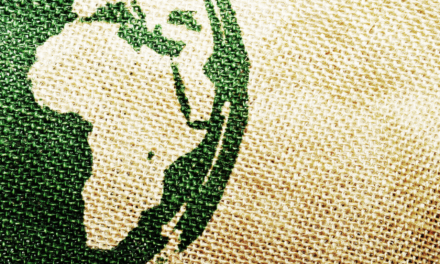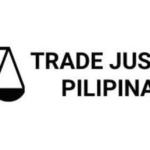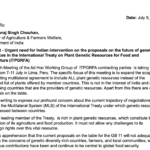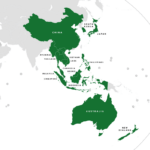By Aileen Kwa*
11 June, 2004: A dirty divide and rule game is being played out at the WTO by the European Commission (EC) ahead of the July General Council meeting, in a last ditch attempt to weaken the developing country bloc which collectively stymied US and EU’s attempts to ram their interests through in Cancun.
The major powers are hoping that with their latest strategies, the deeply unfair agriculture agreement paradigm which developing countries have opposed, to varying degrees, can remain unharmed, and in fact further enhanced in a “framework” the major powers would like agreed by July.
Even more cynically, the US and EU want to institutionalize a wedge between the developing country coalitions which would have far-reaching implications across all WTO negotiations, in the Doha Round and beyond.
Differentiating developing countries into ‘more developed’ and ‘less developed’ has been a tactic the EC and the Americans have had up their sleeves. In the two years since the Doha ministerial, the discussion on making effective special and differential treatment (S&D) was stalemated by the two giants arguing for differentiation. The developing country bloc refused. The reason: any institutionalised differentiation amongst them would weaken their collective power, their only strength vis-à-vis the big powers. The latest tactics will put their unity to the test.
Characterizing Developing Countries
Very broadly, there are two main categories of developing countries as far as the agriculture negotiations go. Those which are more offensive in their interests – that is, looking to get market access in the negotiations, and those that are more ‘defensive’ and wanting to protect their markets.
The more “offensive” countries include Brazil, Argentina, Chile, Uruguay, Thailand and more recently Pakistan, plus Latin American Cairns group members and in particular, the Mercosur.
The “defensive” countries are a mixed group, but include the majority of the developing world, India, China, Indonesia (leader of the G33 (1)), Philippines, the African countries, least developed countries (LDCs), Caribbean and the Central American countries.
The G20 (2) is a mixed group as far as agricultural interests are concerned, bringing together countries from both sides: India, China, Indonesia, Nigeria, and Tanzania alongside Brazil, Argentina and Thailand. Here, Brazil and India are playing a key role in uniting the two traditionally opposing camps. Some of the countries which have been most consistently articulate on development concerns and which have some clout to stand up to the US and EU at the WTO are India, Indonesia and now China (playing more a supportive role).
Most of the G90 countries (African Union, LDCs and African Caribbean and Pacific, ACP) have defensive interests. Except at WTO ministerials (Doha and again in Cancun), these countries have functioned as separate groupings – the African Group, LDCs and ACP – in the WTO. The most vocal amongst them has been Kenya in the African Group, Uganda or Tanzania on behalf of LDCs and sometimes the Caribbean countries – Guyana or Jamaica. Politically however, many in this group are vulnerable to US and EU pressures since most have some kind of preferential trading arrangement with the US (eg. the Africa Growth and Opportunity Act, AGOA) or EU (eg. Cotonou) and are dependent on these powers for aid and loans. However, they have strength in numbers, and this allowed them to beat down the US and EC in Cancun.
Lamy’s Divide and Rule Tactic
The EU’s latest move (3) is an attempt to cause perpetual infighting between developing countries. The potential splits have not yet emerged, but if the so-called G90 are indeed exempt from agriculture tariff reductions, and the G20 continues talking about a market access formula, divisions could emerge. A big fight could ensue over the definition or criteria over which countries will be ‘exempted’ from tariff reductions. There is currently no clear definition of who the G90 are. And Lamy has also not made it clear if it would include all African / LDC / ACP countries, or only the most “vulnerable” of them. In the corridors of the WTO, countries rumoured to be excluded from this package include the bigger G90 markets such as South Africa, Egypt and Morocco.
Questions have already been raised about why certain Caribbean countries, with a GDP of $2,000 can be included, but others with GDP less than $1,000 are excluded. Non-ACP / non-African/non-LDC countries include the Philippines, Indonesia, China, India, Honduras and Panama, and the Latin American countries. The Chinese for instance have about 350 million people subsisting under $1 a day on conditions not unlike LDC countries. Indonesia has a GDP of less than $800. Why should they be excluded?
If these differences are institutionalized, the ones considered ‘more developed’ will presumably undertake tariff cuts not only in agriculture, but also in the industrial tariffs negotiations (non-agricultural market access, NAMA), Singapore issues (trade facilitation, investment, government procurement and competition, if they go through), and will be excluded from certain S& D provisions (not that any on offer are of value). Keeping in mind that these countries – India, Brazil, China – have more political capacity to resist US / EC pressures than most of the African Group, LDCs and ACP countries, splitting them off from each other would be a lose-lose situation for both groups. For the so-called ‘more developed’ third world countries, they would have less ‘moral authority’ to oppose the agenda of the US/ EU in the WTO even though it remains questionable if the majority in their countries are actually better-off. The African Group, LDCs and ACP would likewise loose out since most are unable to withstand very strong pressures from the major powers. Kenya, the most vocal amongst the ACP / African Group, tries to resist but is constantly being wooed by US trade representative and EU Trade Commissioner Lamy.
From past experience, when developing countries as a bloc disintegrates, the US and EC get their way – often for free. In the current fight, US/EC want the attention of developing countries moved away from the troubling domestic subsidies / export subsidies negotiations, to a fight between developing countries over whose markets will be targeted and which ones can be protected. Those with offensive interests may fight for a narrower definition of ‘G90’. The two opposing camps could be pitted against each other, breaking the G20 away from the G90, and possibly creating deep splits within the G20.
The split may look like the fight between countries that are part of the EU’s preferential Cotonou/ ACP scheme and those that are not. The EU capitalised on these differences during the 2001 Doha Ministerial, with disastrous results. Whilst India was fighting against the launching of the Singapore issues, the ACP countries were told that preferential access to the EC market could only be renewed if they accepted a new Round. India was thus isolated and the Doha Round was launched, against the better judgment of the majority of developing countries.
There are also some parallels in this situation with the post-Doha TRIPS and Health negotiations on parallel importing of generic drugs. The Africans – with an HIV catastrophe on their hands and no manafacturing capacity — were told that the Indians / Chinese / Brazilians were only looking out for their export interests (4) while Brazil and India had little moral authority to stop a solution that was painted as important for saving African lives. The result? A non-solution, or in fact one that increases the surveillance powers of the pharmaceutical industries over generic drug producers.
Banding Together and the Way Forward
Developing countries have a narrow window of opportunity between now and July not to play into EU/US hands. At the moment, the G20 market access proposal still calls on all countries except LDCs to undertake a tariff reductions, while the G90 position emerging out of a recent meeting in Guyana demands that the G90 is exempted from agriculture tariff reductions.
To band together, the G20 should take on board the G90 concerns. The Latin American countries in the G20 and Thailand should instead look into a tariff cutting formula that targets the US and EC, leaving out the developing countries. This could be done by putting forward a formula that is intrinsically linked to dumping. Countries that continue to subsidise and export their subsidised produce would have to comply with the Doha mandate of tariff reductions. Developing countries should be allowed to put in place needed border measures – for example, quantitative restrictions or increased tariffs in order to defend themselves against US / EU dumping.
In the meantime, developing countries with offensive interests can look to the UNCTAD’s Global System of Trade Preferences (GSTP) for market access negotiations. The GSTP permits developing countries to enter into preferential trading arrangements amongst themselves regardless of the most favoured nation principle in the WTO. Since 1979, developing countries do not need a waiver from the GATT/WTO to put in place these preferential arrangements.
The GSTP, however, would be detrimental to the majority of people in developing countries if it merely transplants the WTO model of putting trade above all other concerns. Market access arrangements can be struck, but it must be clear that these should remain secondary to the development and human rights concerns of its contracting parties. The policy space and development objectives of countries must be central.
The GSTP was conceived in 1985 by the G77 as a tactical response to the Uruguay Round. It was fully fleshed out as an international agreement by 1988, but was abandoned by its founders two years later, as a result of US pressures on developing countries as well as pressures from the IMF and World Bank.(5) At the forthcoming UNCTAD meeting where the GSTP negotiations will be resurrected, the major powers are similarly nervous. Developing countries should put their energies into this alternative. If the GSTP can emerge as a viable option – one which prioritises development above trade – this could be the economic and political foundations of developing country unity. The alternative – playing into the divide and rule tactics of the EU /US – is too dire to contemplate.
* Aileen Kwa is a policy analyst with Focus on the Global South, and the co-author with Fatoumata Jawara of “Behind the scenes ate the WTO” Zed Books, 2003
Notes
1. The G33 currently has over 40 members. Some like Indonesia, Nigeria and the Philippines are also part of the G20. Others include various Central American countries that have FTAs with the US and are steering clear of the G20 for fear of a backlash from America. Included are also African and Caribbean countries.
2. Led by Brazil, its current composition includes Argentina, Bolivia, Brazil, Chile, China, Cuba, Egypt, India, Indonesia, Mexico, Nigeria, Pakistan, Paraguay, Philippines, South Africa, Thailand, Tanzania, Venezuela, Zimbabwe.
3. Elaborated in related article, Kwa, A, June 2004, “Agriculture: Empty Promises to the South.
4. See letter by Rosa Whitaker, then US Trade Representative for Africa to Sub-Saharan African Ministers, 25 October 2002, in Jawara, F and Kwa, A, “Behind the Scenes at the WTO”, Zed, p. 250.
5. Shukla, S. 2003 “Trade: Emerging South Solidarity Needs Strengthening Through GSTP”, 19 December, in SUNS (South-North Development Monitor) #5488, 23 December 2003.








